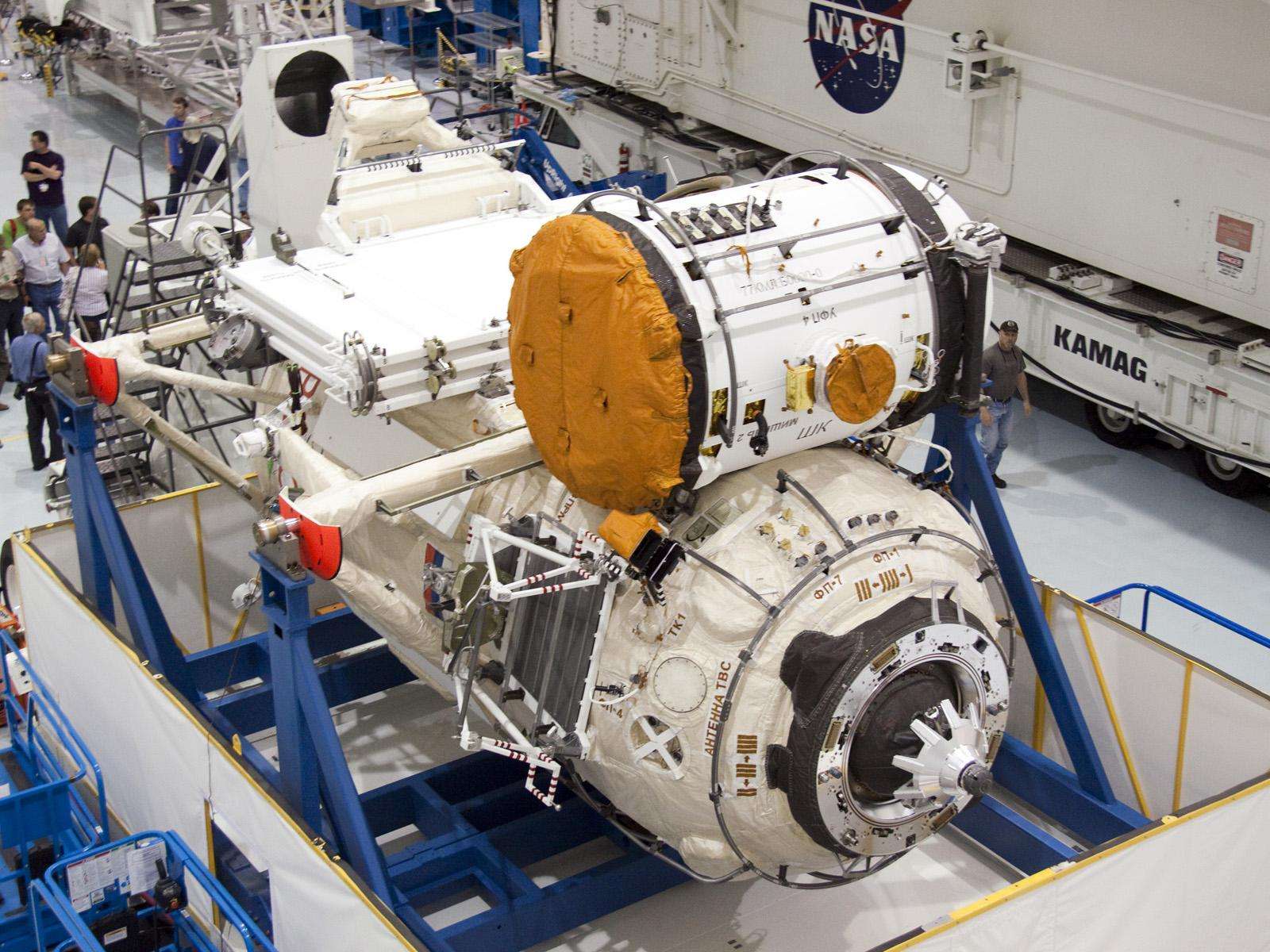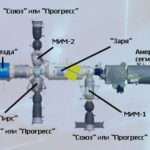 A new Russian module for the International Space Station that will double as a docking compartment and a room for science has been loaded aboard the space shuttle Atlantis at the launch pad 39A for the scheduled May 14 blastoff.
A new Russian module for the International Space Station that will double as a docking compartment and a room for science has been loaded aboard the space shuttle Atlantis at the launch pad 39A for the scheduled May 14 blastoff.
The Mini Research Module 1, also known as Rassvet, is the first and only major piece of Russian hardware that the U.S. will haul to the International Space Station.
But the mission also carries with it the significance of being shuttle Atlantis’ final flight before retirement.
“It is bittersweet,” said Robbie Ashley, the payload mission manager at Kennedy Space Center. “It is the last payload flight for Atlantis. But it’s also the first station flight that we are launching Russian partner hardware.”
Rassvet will be attached to the Earth-facing port of the Zarya control module, the original piece of the space station launched in November 1998.
“It’s about the size of a small Winnebago. It’s a bit cylindrical and when it’s plunked onto the bottom of station it’ll basically have a docking port that’s much lower than the rest of the bulk of station so the vehicles can come in and dock without getting into this little zone of other hardware on station. It’s like a standoff,” said Atlantis astronaut Piers Sellers.
“The Russian company, Energia, has been making that. It’s converted from a previous piece of hardware that they had lying around so they’ve been busy making that for the last couple years. We’ll fly that up for them.”
The space shuttle ride for the module was arranged through an international bartering agreement. NASA has packed 3,000 pounds of equipment, spare parts, food and provisions inside Rassvet for shipment to the station.
Unlike similar modules — the Pirs and Poisk — already at the space station that serve as both docking ports and airlocks for Russian-based spacewalks, the new Rassvet will have a different role.
“MRM 1 is designed for scientific research, it is not for EVA. MRM 1 also provides the additional docking port in order to perform the docking of Russian vehicles,” said Mikhail Kashitsyn, deputy general designer at Energia.
The 18,000-pound module is equipped with the same type of capture probe on its nose that free-flying Soyuz capsules and Progress cargo ships use for docking to the cone-like receptacles on the station. Getting Rassvet firmly connected to the space station using the robotic arm is something that shuttle astronaut Garrett Reisman says will be unusually tricky.
“Nobody really knows if this is going to work which makes it really interesting, so you should stay tuned to see what happens. But because it wasn’t designed to do this, neither the arm nor the module, a lot of smart people have been working really, really hard on it and they’re convinced that it’s going to work.”
Sellers is overseeing the mission’s payloads and will be working alongside robot arm operator Reisman during the installation.
“(The) station arm swings it all the way over the whole of the belly of station, all the way over, and holds it above a docking port on the Russian side. At that point, we’ll use the laptop to talk to the Russian module, wake it up. It’s got two little brains in there and we’ll ask it to extend a docking probe. It basically has the same docking system that a Soyuz has, pretty much. We’ll extend this little probe and then we’ll push it into the station. As far as station’s concerned, it’s just like another Soyuz coming and docking so we’ll push it in with the arm as opposed to using rockets to drive it in.
“The probe will go into a cone, latch and then we’ll retract the probe so that it pulls the two pieces together, the station and the MRM 1, tight.”
Atlantis commander Ken Ham says the crew must strike a delicate balance when maneuvering Rassvet into position for mating with Zarya.
“We can’t go too fast because we might break the arm. We can’t go too slow because the arm may not have enough strength to push through those latches so we’re going at basically a slow rate and hopefully we’re going to drive it right in and it’ll work well,” he said.
“(Piers) will extend the docking probe out so that it is ready to engage to the space station. So he extends that thing out and we line it up really carefully and then basically what I do then is I just go ramming speed on the robot arm. I just floor it, which is kind of fun,” Reisman joked.
Channeling Scottie from Star Trek: “I’m giving it all it’s got, Captain.”
A spacewalk to connect electrical cables between the new module and the rest of the space station is slated for July 23 by two cosmonauts living aboard the outpost — Fyodor Yurchikhin and Mikhail Kornienko.
Rassvet arrived in Florida from Russia last December to undergo final assembly, testing and preps for launch. The work was performed at the former Spacehab processing facility at Port Canaveral.
In early April, it was shipped to the Kennedy Space Center’s Space Station Processing Facility where it was placed into the payload transporter and then driven out to the launch pad on April 15.
After Atlantis arrived at the pad a week later, work began to insert the payload into the shuttle from the gantry’s cleanroom. That installation successfully occurred Sunday, NASA officials reported.
Upcoming activities include testing the electrical connections between Rassvet and the orbiter, final pressurization and leak checks of the module, then the last-minute chores to button up the payload bay before the doors are closed for launch.
“All of our activities were very fruitful ones and we enjoyed our time here,” said Kashitsyn, who also served as Energia’s deputy technical lead for operations in Florida readying the module for flight.
Article credit: SpaceFlightNow.com
Image Credit NASA.gov and Yandex.Ru









